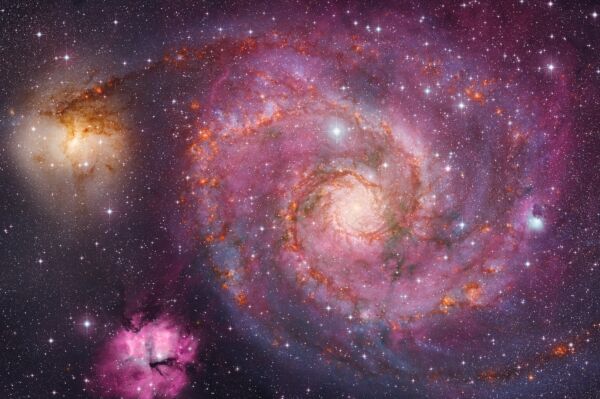Astronomers studying the farthest reaches of the universe have made a “perplexing” discovery: the most distant rotating disk galaxy observed to date bears a striking resemblance to the Milky Way, with a level of similarity that some might find eerie.
This celestial structure, known as REBELS-25, was detected in high-resolution images obtained by the Atacama Large Millimeter/submillimeter Array (ALMA). The findings detailing this discovery were published on October 7th in the Monthly Notices of the Royal Astronomical Society.
Researchers were truly taken aback by the unusually smooth and orderly structure of this galaxy, a feature scientists previously believed would require billions of years of evolution to form.
“Based on our understanding of galaxy formation, we expected most early-universe galaxies to be small and disorganized,” remarked co-author and astronomer at Leiden University, Jacqueline Hodge, in a statement.
REBELS-25 stands out because its smooth similarity to the Milky Way, can be traced back to a youthful age of the universe around 700 million years, which is only 5% of the currently estimated age of the universe (approximately 13.7 billion years). Despite the surprising resemblance of REBELS-25 to the Milky Way, the latter is only slightly younger than the universe itself (13.6 billion years).
In other words, while it was previously believed to take 13.6 billion years to develop a smooth appearance like the Milky Way, it may, in fact, only require 700 million years, as potentially demonstrated by REBELS-25.
“To see a galaxy so similar to our Milky Way and strongly dominated by rotation challenges our understanding of how galaxies in the early universe evolved so quickly into the ordered galaxies we see today,” explained first author and doctoral student at Leiden University, Lucie Rowland.
Thanks to ALMA’s extremely high resolution, astronomers were able to identify the unusually ordered structure and motion of REBELS-25. Evidence also suggests that this galaxy possesses spiral arms and an elongated central bar, strikingly similar to the Milky Way.
“Discovery of further evidence of structured evolution will be an exciting find, as it would represent the most distant galaxies observed to date with these features,” Rowland added.
The team now hopes to further observe with possible assistance from NASA’s James Webb Space Telescope. This may further challenge our current understanding of how galaxies evolve over billions of years.
“In particular, continued observations of other REBELS galaxies by ALMA will enable robust kinematic modeling of additional rotating disk galaxy candidates,” the researchers wrote in their paper. ◇

